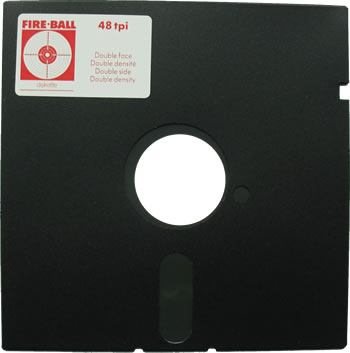In 1976 Wang Laboratories informed Shugart Associates, that the eight inch system was too big for desktop development.
Shugart Associates then developed a five one quarter inch format. The storage capacity was initially at 98.5 KB and was later increased to
110 KB. Among other things, by its smaller size, the five one quarter inch floppy disk was significantly cheaper than the eight inch model.
This led to a rapid replacement of the eighth inch model.
1978, Apple introduced the Apple II together with the five one quarter Disk II. On this disk was space for data up to 113 KB.
Two years later, through a refinement of the Group Code Recording (GCR) encryption method the memory of the five one quarter Disk II could
be increased to 140 KB.
At the same time as Apple released the Apple II, Tandon introduced a double sided read-/writeable disk. By improving the process of the double-density method, the capacity of
these disks improved to 360 KB.
In addition a savings trend developed by the users, because double-sided disks compared to the simple ones were very expensive.
They simply punched a hole in a certain place of the floppy disk and then they simply "flipped" the storage, so that they can write on the back side.
Initially the producers advised against this process. Later, however, they advertised both sides of the storage as potentional writeable.

In 1984 with the IBM PC / AT, the high density disk, which had 1200 KB memory (known formally as a 1.2 MB disk) was published.
In comparison to the very expensive 10 to 20 MB hard drives, this was a huge dimension.
The most notable feature of the high-density disks was the backward compatibility to the double-density disks, which favored a simple upgrade.
Now the fact became public that the high-density (HD) discs did not differ from the usual Double Density (DD) disks in structure.
So it was theoretically possible for a HD drive to write a DD disk with the HD capacity. In practice, this worked in most cases without problems.
At the end of the eighties, the five one quarter model was replaced by the three and a half model.